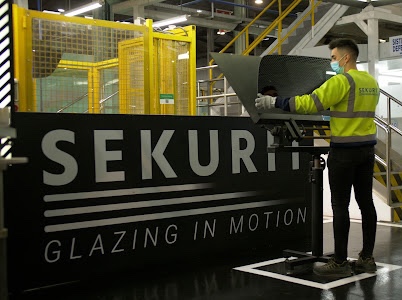Auto Glass Giant Saint-Gobain Cuts Costs & Lead Time with BCN3D 3D Printers
Automotive glass is one of those extremely mundane-sounding sectors that’s nonetheless indispensable to the stability of global supply chains. Those sectors, of course, seem to be the ones which have been most amenable in recent years for incorporation of additive manufacturing (AM) into their routine production operations.
Fittingly, then, in 2019, Saint-Gobain started using BCN3D’s Epsilon W50 printers and Smart Cabinets storage units in the Sekurit unit of its Barcelona plant. Saint-Gobain, a French multinational that has existed since 1665, and which is one of the key players in automotive glass, currently uses 3D printing to produce the tools, fixtures, and jigs it needs to make automotive sidelights and backlights.
Saint-Gobain just released a brief overview of the results of the adoption of 3D printing in its business operations thus far, and the numbers are solid: Barcelona’s Sekurit division has saved €170,000 (about USD$182,000) in barely three years. Even more impressively, and of the utmost significance to enhancing supply-chain resilience, use of 3D printing has reduced the lead times required for tooling by 93%.
In a press release, Angel Salas, the maintenance engineer at Saint-Gobain’s Barcelona plant, commented, “At Sekurit we have been manufacturing automotive components for 90 years. Thanks to 3D printing, we have experienced a significant cost reduction and a faster workflow adapted to our needs in the manufacture of tooling since we incorporated this technology, compared to external suppliers we used in the past.”

$182,000 over the course of three years for a company the size of Saint-Gobain, with 180,000 employees across 75 countries, doesn’t sound like much initially. On the other hand, the Sekurit division alone has 39 plants around the world. So, if the company were to incorporate AM techniques at all its Sekurit plants, it could save over $2 million a year at baseline, just for this one application. When you start to consider the possibilities for Saint-Gobain increasing the number of AM applications it employs, as well as its incorporation of AM in additional divisions beyond Sekurit, the potential for significant long-term cost reduction becomes clear.

The logic behind digitizing the supply chain becomes clearer, moreover, when viewed against the larger backdrop of a general push towards lower carbon emissions, as well as the reduction in workforce seen in just about every industry since the pandemic started. Concerning the first of these things, Saint-Gobain last month entered into an agreement with German car manufacturer Audi, as well as German company Reiling Glas Recycling, for a one-year pilot program to recycle automotive glass. This is especially significant as no closed-loop recycling circuit yet exists for the product. If it’s successful, the combination of recycled glass and AM could contribute significantly to the aggregate reduction of carbon-emissions in automotive production. Because Saint-Gobain has slowly been increasing its activities in additive construction, there’s no reason to assume it won’t expand additive across its other operations.

Concerning the reduction in workforce since early 2020, in the United States, at least, the automotive glass sector has lost 14% of its technicians. It would be interesting to get a more detailed breakdown of Saint-Gobain’s numbers in this case, to see how much of the cost savings were labor-related. It’s important to keep in mind, beyond the cost savings, that the filling of supply chain gaps means that the company is able to keep output at a level that likely would’ve no longer been achievable without the incorporation of, in this case, 3D printing.
Additionally, from a longer-term perspective, and in all heavy industries, just-in-time and right-on-time production will continue to become more intertwined with standard operating procedures. AM isn’t the only solution to this problem, but it’s hard to imagine the problem being solved without its being an integral component.
Images courtesy of Sekurit
Subscribe to Our Email Newsletter
Stay up-to-date on all the latest news from the 3D printing industry and receive information and offers from third party vendors.
Print Services
You May Also Like
3D Printing News Briefs, April 12, 2025: RAPID Roundup
The news from last week’s RAPID+TCT in Detroit just keeps on coming! That’s why today’s 3D Printing News Briefs is another RAPID Roundup of more exciting announcements from the trade...
Custom Car Parts, Flame Retardant Material, & More HP Innovations at RAPID
HP had a very busy week at RAPID+TCT, announcing several of its latest collaborations and innovations in polymer and metal 3D printing. Its new solutions are meant to scale production,...
amsight Secures Funding and Lands Key Partnership to Power Smarter 3D Printing
Software startup amsight just hit two major milestones: it raised early funding and struck a strategic partnership with one of Germany’s top metal 3D printer makers. The Hamburg-based company completed...
RAPID TCT 2025: Spring in the Paris of the Midwest
I’m going to go out on a limb here and say that whomever coined the phrase Detroit: Paris of the Midwest, had not spent a lot of time in Paris...

























